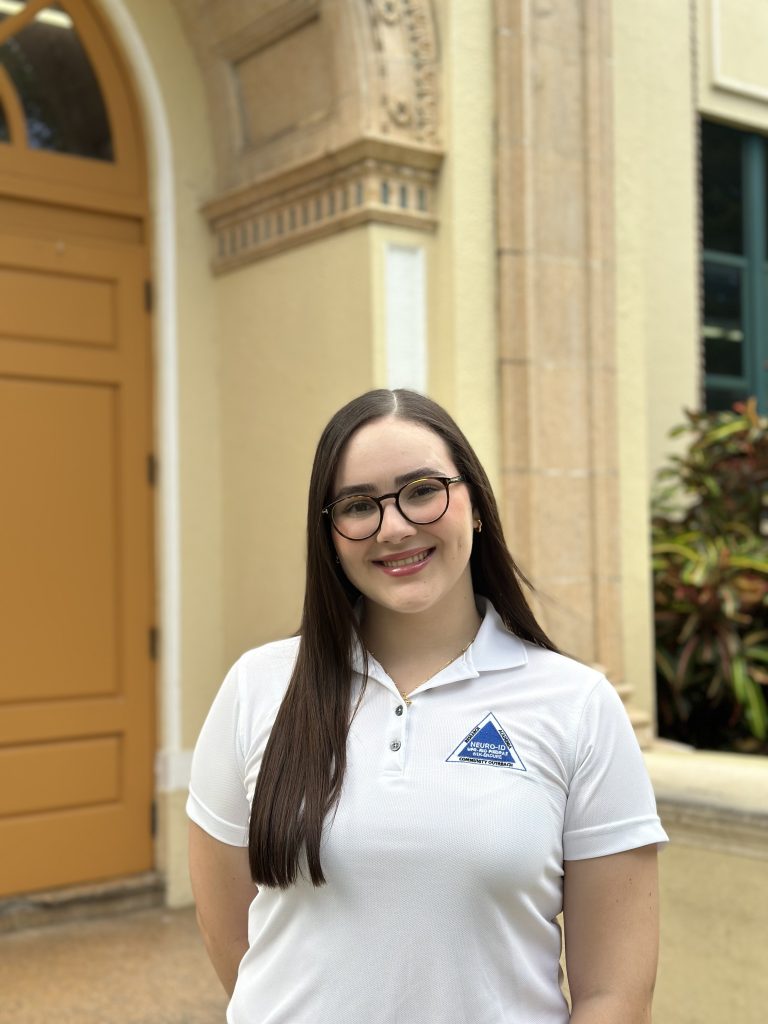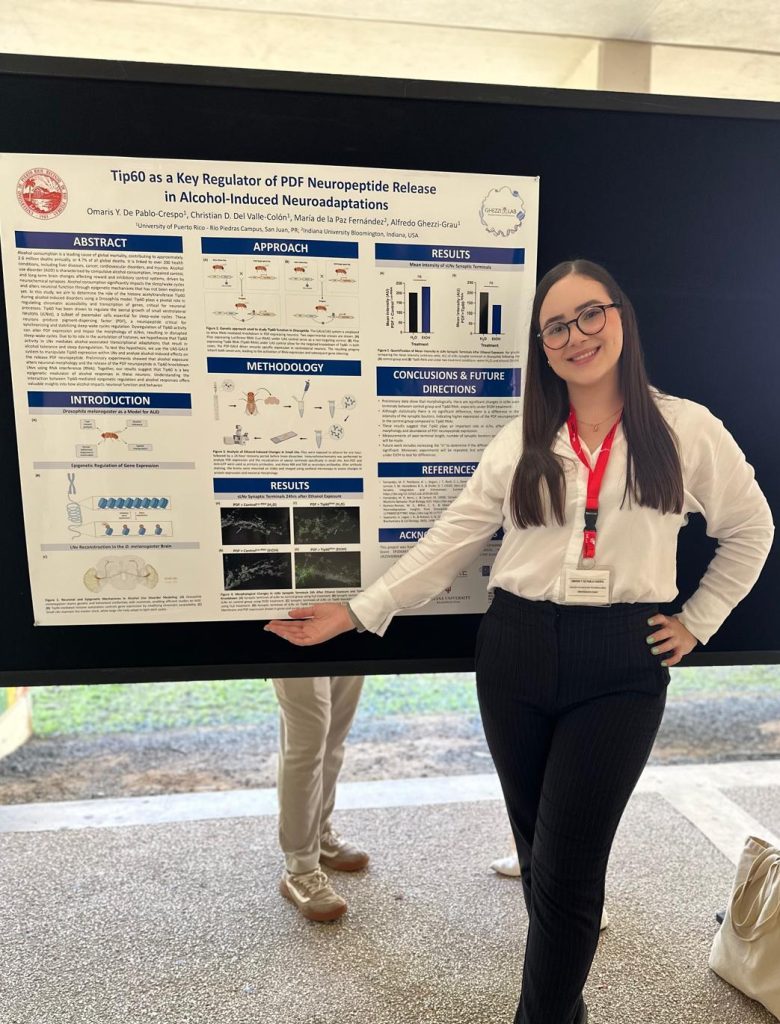
Home Research
Mentor/s:
Dr. Alfredo Ghezzi
Project Title:
Tip60 as a key regulator of PDF neuropeptide release in alcohol-induced neuroadaptations
Project Description:
Alcohol consumption is a leading cause of global mortality, responsible for 2.6 million deaths annually and associated with over 200 health conditions. Despite its widespread impact, the epigenetic mechanisms underlying alcohol-induced neurological and behavioral disorders remain poorly understood. This project investigates the role of Tip60, a histone acetyltransferase critical for chromatin remodeling and transcription, in alcohol-induced disruptions of neuronal function and sleep-wake cycles using a Drosophila model. Tip60 regulates the axonal growth of small ventrolateral neurons (sLNvs), which produce the pigment-dispersing factor (PDF) neuropeptide essential for circadian rhythms. Alcohol exposure is hypothesized to alter Tip60-mediated transcriptional adaptations, impairing PDF release and sLNv morphology, leading to disrupted sleep-wake cycles and alcohol tolerance. Using the UAS-GAL4 system, we manipulate Tip60 expression in LNv and analyze the effects of alcohol exposure on PDF release, neuronal morphology, and sleep behavior. Preliminary findings reveal that Tip60 knockdown disrupts neuronal morphology and PDF release following alcohol exposure, identifying Tip60 as a key epigenetic regulator of alcohol responses. This research provides insights into the molecular basis of alcohol-induced neuronal and behavioral changes, offering potential targets for therapeutic intervention.
Summer Research
Mentor/s:
Maria Lehtinen , PhD
Project Title:
Choroid plexus immune cell infiltration following neuroinflammation during development
Project Description:
Hydrocephalus is a severe condition caused by excessive cerebrospinal fluid (CSF) accumulation in the brain’s ventricles, with pediatric cases often linked to brain inflammation. The choroid plexus (ChP), a specialized secretory tissue producing most CSF and forming a critical brain-periphery barrier, plays a key role in this process. During brain inflammation, the ChP interacts with immune cells, but the underlying mechanisms remain unclear. Existing hydrocephalus mouse models lack representation of inflammatory processes in developing mice. To address this, we established an inflammatory hydrocephalus model in embryonic and postnatal mice using weight-adjusted doses of lipopolysaccharide (LPS). In embryos (E14/E15), LPS induced early infiltration of neutrophils and undifferentiated monocytes (CD45+/S100A9+/Iba1-), followed by an increase in resident macrophages (CD45+/Iba1+/S100A9+) at 72 hours. In contrast, P7 mice showed no significant increase in CD45+ cells with similar dosing. These findings mirror immune responses observed in adult models and provide insights into the inflammatory mechanisms of hydrocephalus in development. This work advances the potential for targeted therapies aimed at controlling ChP-driven brain inflammation and mitigating hydrocephalus in pediatric patients.
